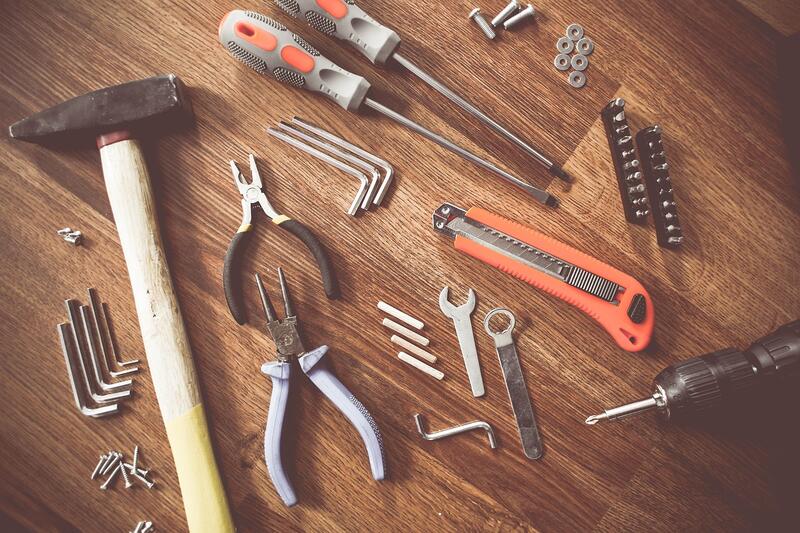Decarbonization Pathways for Repair and installation of machinery and equipment: An Analysis
This article analyzes decarbonization pathways for the repair and installation of machinery and equipment, exploring ways to reduce emissions in these processes.

What is Decarbonisation in "Repair and Installation of Machinery and Equipment" Sector and Why is it Important?
Decarbonisation is the process of reducing carbon emissions from various sources to achieve a net-zero carbon economy. In the Repair and Installation of Machinery and Equipment sector, decarbonisation means reducing emissions from the operation of machinery and equipment, transportation of machinery and equipment, and the manufacturing of machinery and equipment. The sector is responsible for a significant amount of carbon emissions due to the energy-intensive nature of the work.
Decarbonisation is essential to mitigate the impact of climate change. The Intergovernmental Panel on Climate Change (IPCC) has warned that the world needs to limit global warming to 1.5°C to avoid catastrophic consequences. To achieve this, we need to reduce carbon emissions by 45% by 2030 and reach net-zero emissions by 2050. The Repair and Installation of Machinery and Equipment sector needs to play its part in achieving this goal.
What are the Main Sources of Carbon Emissions in "Repair and Installation of Machinery and Equipment" Sector?
The Repair and Installation of Machinery and Equipment sector is responsible for carbon emissions from various sources. The main sources of carbon emissions in this sector are:
- Energy consumption: The operation of machinery and equipment requires a significant amount of energy, which is mostly generated from fossil fuels. The energy consumption in this sector accounts for a significant amount of carbon emissions.
- Transportation: The transportation of machinery and equipment also contributes to carbon emissions. The transportation of heavy machinery and equipment requires large vehicles that consume a lot of fuel.
- Manufacturing: The manufacturing of machinery and equipment requires energy and materials, which also contribute to carbon emissions.
How can we Reduce Carbon Emissions in "Repair and Installation of Machinery and Equipment" Sector?
There are several ways to reduce carbon emissions in the Repair and Installation of Machinery and Equipment sector. Some of the ways are:
- Energy Efficiency: One of the most effective ways to reduce carbon emissions is to improve energy efficiency. The sector can reduce energy consumption by implementing energy-efficient practices, such as using LED lighting, upgrading to energy-efficient equipment, and optimizing the use of machinery.
- Renewable Energy: The sector can also reduce carbon emissions by switching to renewable energy sources, such as solar and wind power. The use of renewable energy can significantly reduce carbon emissions and also help to reduce energy costs.
- Transportation: The sector can reduce carbon emissions from transportation by using low-emission vehicles, optimizing the use of vehicles, and reducing the distance traveled.
- Sustainable Manufacturing: The sector can also reduce carbon emissions by adopting sustainable manufacturing practices, such as using recycled materials, reducing waste, and optimizing the use of resources.
What are the Challenges Facing Decarbonisation in "Repair and Installation of Machinery and Equipment" Sector?
Decarbonisation in the Repair and Installation of Machinery and Equipment sector faces several challenges. Some of the challenges are:
- Cost: The transition to low-carbon practices can be costly, and many businesses may not have the financial resources to invest in energy-efficient equipment or renewable energy.
- Lack of Awareness: Many businesses in the sector may not be aware of the impact of carbon emissions or the benefits of decarbonisation.
- Technological Barriers: Some businesses may not have access to the latest technology or may not have the technical expertise to implement low-carbon practices.
- Regulatory Barriers: The lack of supportive policies and regulations can also hinder decarbonisation in the sector.
What are the Implications of Decarbonisation for "Repair and Installation of Machinery and Equipment" Sector?
Decarbonisation in the Repair and Installation of Machinery and Equipment sector has several implications. Some of the implications are:
- Business Opportunities: Decarbonisation can create new business opportunities, such as the development of new technologies and services.
- Competitive Advantage: Businesses that adopt low-carbon practices can gain a competitive advantage by reducing costs and improving their reputation.
- Regulatory Compliance: Decarbonisation can help businesses to comply with regulations and avoid penalties.
- Job Creation: Decarbonisation can create new job opportunities, such as the development of new technologies and services.
Conclusion
Decarbonisation in the Repair and Installation of Machinery and Equipment sector is crucial to reduce carbon emissions and mitigate the impact of climate change. The sector can reduce carbon emissions by improving energy efficiency, switching to renewable energy sources, reducing transportation emissions, and adopting sustainable manufacturing practices. However, the sector faces several challenges, such as cost, lack of awareness, technological barriers, and regulatory barriers. Decarbonisation can create new business opportunities, competitive advantages, regulatory compliance, and job creation. The sector needs to play its part in achieving a net-zero carbon economy and mitigating the impact of climate change.